safepricker's blog
Traditional Chinese Acupuncture has been my passion since high school. I saved up a week's allowance to buy a book on Oriental Medicine during my sophomore high school. I still have the book. I also love music and photography. This particular blog, however, hopes to explain how acupuncture can help people restore or maintain their health.
Saturday, October 21, 2017
Thursday, June 29, 2017
The Oasis Acupuncture Team
The Oasis Team:
The Oasis Team is housed at the Centro Maginhawa.
97 Maginhawa St., Teachers' Village, Quezon City. (Tel +6329217649 and +6324348490).
Location: https://goo.gl/maps/7opjJ63ebUt
The Oasis Team is housed at the Centro Maginhawa.
97 Maginhawa St., Teachers' Village, Quezon City. (Tel +6329217649 and +6324348490).
Location: https://goo.gl/maps/7opjJ63ebUt
Dr. Maiks Biag trained at the SMIC Institute of Traditional Chinese Medicine, the first comprehensive TCM training institute in the Philippines. She finished medicine at the University of Santo Tomas and holds a diplomate in anesthesiology and is currently a Medical Specialist III and an assistant training officer at the Bataan General Hospital and Medical Center.
Dr. Eddie Concepcion trained at
the Fujian University of Traditional Chinese Medicine in the People’s Republic
of China. He has been practicing acupuncture for 30 years now and is a prime mover in the promotion of Traditional Chinese Medicine (TCM) in the Philippines. He was founding executive director of the HeathDev Institute in Ateneo. He is currently the president of the SMIC Institute of TCM which provides the most comprehensive training program of TCM in the Philippines.
Dr. Joy Urbano-Concepcion is a pathologist and has undergone acupuncture training under Dr.
Tsun Nin Li of Stanford University, California and, recently, at the Fujian
University of Traditional Chinese Medicine, PROC. She is a faculty member at
the Ateneo School of Medicine and Public Health and a consultant of The
Philippine Children’s Medical Center where she is a pathologist and
acupuncturist of their wellness clinic. She is the loving wife of Eddie.
Dr. Joseph Gancia graduated from the University of Santo Tomas and has been practicing in
general/cardiovascular/oncology and Traditional Chinese Medicine (TCM)
with special interest in medical research. He earned his TCM training with the
UP-AKKAP program initially and at the Sydney Institute of TCM. He has
collaborated in researches on cancer treatments while in Australia and has
received recognition and several awards for those efforts. He also holds clinic at the HealthDev Institute.
Dr. Benjamin Sison completed his acupuncture training at the HealthDev Institute (Ateneo) where he also holds clinic and is one of its trainors.
Dr. Philip Tan-Gatue is a graduate of UP Integrated Liberal Arts and Medicine (INTARMED) program. He is a faculty member of the UP College of Medicine Traditional Medicine Unit and the UERM graduate school acupuncture training program. He trained at Nanjing University of TCM. He is a consultant at the SMIC Institute of TCM.
Thursday, December 20, 2007
accrediting acupuncturists
Acupuncturists participated in a public hearing of the implementing rules and regulations of the Traditional and Alternative Medicine Act of 1997 (RA8423) for the accreditation of acupuncturists. The landmark law allows non-doctors to practice acupuncture thereby allowing a highly effective form of treatment accessible to more people. Below are photos of participants, majority of whom are non-doctors and come from community-based health programs, treating each other just before the start of the second day of public hearings.
IT IS NOT A HAIRSTYLING SEMINAR.
 sis. gloria receiving acupuncture treatment from one of her students.
sis. gloria receiving acupuncture treatment from one of her students.
 sis. gloria is not grimacing in pain. that is just the way she is when she proudly demonstrates what her former students, now full-time acupuncturists, can do. sis. gloria was actually a nurse before she became a nun. she holds an acupuncture clinic and training center for the poor in pandacan.
sis. gloria is not grimacing in pain. that is just the way she is when she proudly demonstrates what her former students, now full-time acupuncturists, can do. sis. gloria was actually a nurse before she became a nun. she holds an acupuncture clinic and training center for the poor in pandacan.
 administering scalp acupuncture which they recently learned from a visiting renowned american acupuncturist.
administering scalp acupuncture which they recently learned from a visiting renowned american acupuncturist.
IT IS NOT A HAIRSTYLING SEMINAR.
 sis. gloria receiving acupuncture treatment from one of her students.
sis. gloria receiving acupuncture treatment from one of her students. sis. gloria is not grimacing in pain. that is just the way she is when she proudly demonstrates what her former students, now full-time acupuncturists, can do. sis. gloria was actually a nurse before she became a nun. she holds an acupuncture clinic and training center for the poor in pandacan.
sis. gloria is not grimacing in pain. that is just the way she is when she proudly demonstrates what her former students, now full-time acupuncturists, can do. sis. gloria was actually a nurse before she became a nun. she holds an acupuncture clinic and training center for the poor in pandacan. administering scalp acupuncture which they recently learned from a visiting renowned american acupuncturist.
administering scalp acupuncture which they recently learned from a visiting renowned american acupuncturist.
Thursday, December 06, 2007
The First PITAHC Acupuncture Accreditation Committee Meeting
 Juvencio Ordoña, MD, the new OIC-Director General of the Philippine Institute of Traditional & Alternative Health Care (PITAHC), presents draft guidelines for the accreditation of acupuncturists in the Philippines. Francis Ras, MD on far right, Edgardo Javillonar, MD on far left, and Jennifer Madamba, MD on foreground. PITAHC is a government body tasked with the development and regulation of alternative medicine in the Philippines.
Juvencio Ordoña, MD, the new OIC-Director General of the Philippine Institute of Traditional & Alternative Health Care (PITAHC), presents draft guidelines for the accreditation of acupuncturists in the Philippines. Francis Ras, MD on far right, Edgardo Javillonar, MD on far left, and Jennifer Madamba, MD on foreground. PITAHC is a government body tasked with the development and regulation of alternative medicine in the Philippines. Jenny Madamba and Ed Javillonar review the guidelines which had actually been drafted and had already undergone public hearings in 2004. Dr. Ordoña promises to get things done fast this time.
Jenny Madamba and Ed Javillonar review the guidelines which had actually been drafted and had already undergone public hearings in 2004. Dr. Ordoña promises to get things done fast this time. Discussion at the office of PITAHC, 24th floor, Atlanta Building, Greenhills.
Discussion at the office of PITAHC, 24th floor, Atlanta Building, Greenhills. The newly installed Acupuncture Accreditation Committee with the Director General. (Left to right): Edgardo Javillonar, MD, Jennifer Madamba, MD, Juvencio Ordoña, MD, yours truly, and Alfonso Lagaya, MD. Not in the picture: Angela Garcia, MD, and Francis Ras, MD.
The newly installed Acupuncture Accreditation Committee with the Director General. (Left to right): Edgardo Javillonar, MD, Jennifer Madamba, MD, Juvencio Ordoña, MD, yours truly, and Alfonso Lagaya, MD. Not in the picture: Angela Garcia, MD, and Francis Ras, MD. Dr. Ordoña relates his encounter with the needle.
Dr. Ordoña relates his encounter with the needle. Dr. Ordoña and Dr. Lagaya: the present and former bosses of PITAHC.
Dr. Ordoña and Dr. Lagaya: the present and former bosses of PITAHC.
 Al Lagaya undergoes acupuncture at end of meeting. Jenny administering.
Al Lagaya undergoes acupuncture at end of meeting. Jenny administering.
Tuesday, October 09, 2007
ventosa in vogue again
 the traditional ventosa cup. vacuum is induced by using fire to heat the inside and applying the cup on the body with sleight of hand.
the traditional ventosa cup. vacuum is induced by using fire to heat the inside and applying the cup on the body with sleight of hand. the newer ventosa cups with suction pump
the newer ventosa cups with suction pump to an anxious first timer, ventosa is more acceptable than needles.
to an anxious first timer, ventosa is more acceptable than needles.a few weeks ago in a party, i saw a young lady in spaghetti straps with ventosa marks on her back. i think her doctor or whoever put the ventosa forgot to tell her to keep herself warm and to avoid drafts.
and yesterday i found a flyer on our gate. it advertized ventosa-massage therapy in a spa nearby.
ventosa, otherwise known as chinese cupping, is becoming popular again. it was almost a lost healing art form. it was the common home remedy for cough, for flu and for tummy pains.
what is ventosa? it is a traditional form of medical therapy that uses negative pressure or suction to warm and/or remove blockages in the body. this means it can remove colic, muscular pains and relieve knotted muscles. in the past, ventosa was used to drain pus and toxins from skin infections and animal bites. they are kept on for 20 minutes usually. one time i fell asleep with cups on my abdomen. it was a bad case of a bum stomach. i woke up in the morning with blisters. most of the time, the cups leave round dark marks that may stay on for days.
there is one clinic which uses ventosa to suck blood out of the skin. they use strong machine pumps to aid suction. i am not too familiar with this system but it is believed that this "detoxifies" the body. it looks like a modern modification of the traditional method. anyway, if done properly on a condition that requires it, it can probably be helpful. but being a traditionalist, i would rather use the old, tried and tested way.
Saturday, April 29, 2006
Issues/FAQs
 Does acupuncture cure or is it just a stopgap measure?
Does acupuncture cure or is it just a stopgap measure?It does both. A correct diagnosis has to be made first and an appropriate treatment plan is geared towards restoring equilibrium. As mentioned in an earlier blog (Introducing Acupuncture), diagnosis is based on a series of steps -- interview, tongue diagnosis, pulse diagnosis and palpation. It looks at the human being as a mini-universe, a micro-cosmos. And the astute doctor must capture an accurate overall picture.
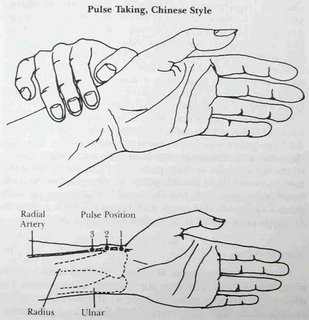 pulse diagnosis
pulse diagnosis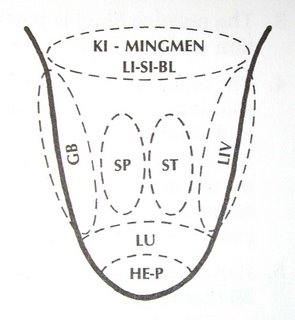 tongue diagnosis guide
tongue diagnosis guideMany times, the problems are merely quality of life problems. These are conditions western medicine doctors often dismiss as “acceptable” or, worse, "psychosomatic" -- conditions which you just have to live with. But for the TCM doctor these are a concern and requires treatment before it becomes a western medicine concern. Acupuncture works very well for serious conditions, too. They control the toxic side effects of chemotherapy and cobalt treatment. Western medicine has recognized its role in the treatment of many types of pain conditions, stroke, infertility, etc.
How long do treatments last?
The needles are kept in place for 20 minutes. A course takes from one to 20 sessions. And, many times, especially for degenerative conditions like osteoarthritis, complications of diabetes mellitus and stroke, the patient has to take several courses. It is advisable to continue treatment after the condition has been resolved for the purpose of maintenance and prevention. On the average, the course takes 2 to 3 months of weekly sessions but years of treatment is not unusual especially for the serious chronic conditions.
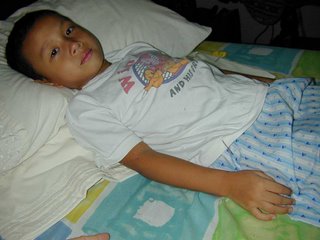
How about the danger of masking a serious condition?
What if the pain is actually a condition that requires immediate lifesaving surgery? What if the malignant tumor is still curable by immediate removal? What if it all ended up with treatment failure when all that was needed was a pill that was just there in the drugstore?
These are very legitimate issues that confront me everyday. Many times, the answers are clear-cut. Bacterial infections are still best treated with antibiotics. Life-threatening conditions, life support and most emergencies belong to western medicine. But there are gray areas. Here, I use the best of both worlds. I review all the existing laboratory and diagnostic work-up. If necessary, I get additional laboratory examination and refer for further diagnostic work-up. I keep up-to-date with the latest in the field. And I maintain a database of all the pertinent medical documents the patient has. But nothing beats frequent regular dialogue with the patient and/or his/her family regarding options, as well as keeping an effective network with other medical specialties. For when one deals with the illness of an individual, one deals with the innermost hopes and fears. And this is such a huge responsibility that I alone may not be able to bear at times. I seek help from other experts who may be in a better position to help my patient.
What are Channels/Meridians?
Unique to Traditional Chinese Medicine is the concept of channels or meridians. These are pathways where blood and qi flow. They are precise in location but they do not have a structural analogue.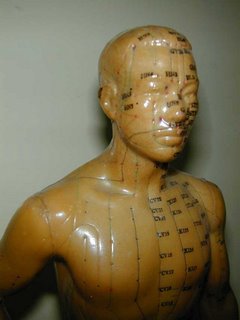
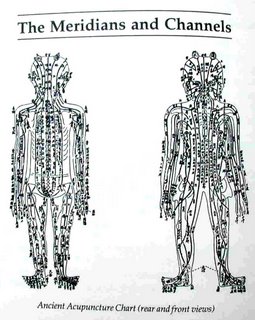
Along the channels/meridians are specific points that have specific properties. Acupuncture points have individual properties that can effect particular changes in the physiology. And there are about 365 acupuncture points. Interestingly, electronmicroscope study of these points revealed no significant structure save for the fact that there is a small condensation of tissue in the area and that most of them are near peripheral nerve endings. This condensed tissue appears to have no western medicine function.


Along the channels/meridians are specific points that have specific properties. Acupuncture points have individual properties that can effect particular changes in the physiology. And there are about 365 acupuncture points. Interestingly, electronmicroscope study of these points revealed no significant structure save for the fact that there is a small condensation of tissue in the area and that most of them are near peripheral nerve endings. This condensed tissue appears to have no western medicine function.
What is moxibustion?
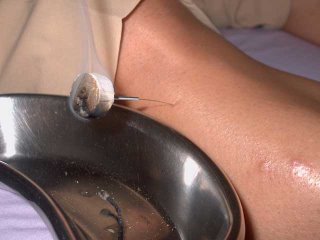
Moxibustion is the process of warming by burning an herb over an acupuncture point. Moxa, the herb, is dried Artemisia vulgaris or mugwort. They come mainly in two forms: wool or rolled. Many attach them to the handle of the needle and are lit there. Some are placed in a heat conducting metal container which is in turn applied to the skin. Newer ones come as small rolled stubs attached to adhesive insulators which are directly applied to the skin. An old way is by burning them as rolled “tobaccos” which are manually held close to the point. Moxibustion drives the cold out of the system. It is considered better than using ultraviolet radiation.
Though no untoward effects have been documented, there are patients who do not like the smoke of moxa. Smokeless moxa is available though. A more important concern is the risk of burns though in some instances this is a desired effect. Burning of the skin – moxacautery -- is the direct application of the burning end of a rolled piece of moxa against the acupuncture points of the skin. A practice in ancient China, this is still being practiced in some of its far-flung provinces today. For cosmetic and health reasons, this is discouraged.
SAMPLES OF MOXA STICKS:
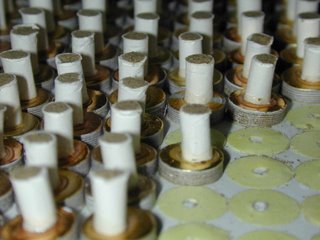
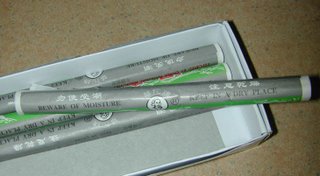
Friday, April 28, 2006
Introducing Acupuncture
 What is Acupuncture?
What is Acupuncture?Acupuncture is an ancient Chinese healing method that uses very fine needles. These are inserted on points of the body to trigger the flow of energy and establish harmony or balance.
The diagnosis involves your complete history and physical examination. You will also undergo the Traditional Chinese Medicine method of tongue and pulse diagnoses. The doctor will ask several questions about your lifestyle, diet, personality and how you feel about certain events in your life. The approach is personal and holistic so that the proper points can be selected.
Is the treatment painful?
Other than a mild pinprick sensation or electrical jolt upon insertion of the needle, the treatment should be relatively painless. The desired feeling after insertion of the needle should be heavy, dull or numb. This sensation sometimes persists even after the session.
Possible mechanisms of acupuncture treatment
The medical journals cite theories and possible mechanisms of action. The first theory cited was the gate control theory. This theory suggests the presence of gate valves on the spinal cord that closes shut with acupuncture treatment; pricking the skin blocks the pain nerve impulses at the spinal cord level. However, this fails to explain why toothache is controlled by acupuncture. The spine goes up to the neck only. So, a follow-up theory states that there must be a gate also at the thalamus (up in the brain); hence, the multiple gate control theory. Eventually, both these theories were debunked. They then discovered the endorphins and other natural pain relieving hormones that get elevated with acupuncture. However, this also cannot explain why migraine disappears for long periods of time and, many times, resolved after acupuncture treatment. (Endorphins don’t last long in the blood). And, how about other non-pain conditions that improve with acupuncture like stroke? Of course, there are those who ascribe placebo. But this, too, cannot explain the consistent success of treatment in conditions like shingles, arthritis and sinusitis; placebo succeeds just 60% of the time.
Maybe, a Dr. Looney has the right answer. He wrote a letter to a medical journal suggesting that the nerves on the skin (peripheral nerves) have a special connection to the nerves that control the internal organs (autonomic nerves). When the peripheral nerves are needled, something happens to the autonomic nerves. He explained further that the peripheral nerves and the autonomic nerves arise from the same layer of the embryo; it is highly possible that the connection between the two types of nerves was never totally cut with the growth of the embryo. However, no such structure has been found so far. And, I know of no attempt to search for such a structure.
From the Oriental viewpoint, acupuncture re-establishes harmony in the flow of energy or Qi (chi) and blood in the body. It corrects the lack, excess or imbalance of energy (Qi) which causes illness. Another reason could be your body’s inability to protect itself from aversive environmental conditions. Acupuncture will promote the return of equilibrium -- restoring the balance of yin and yang (the two opposing forces in the cosmos) -- in your body and increase resistance against these aversive elements.
Acupuncture is widely accepted in many countries. In the Philippines, the Philippine Institute of Traditional and Alternative Healthcare (PITAHC), a government agency, has listed acupuncture as one of its major thrusts in health care delivery. Acupuncture has been recognized by the Philippine government as a legitimate form of medical therapy as far back as 1960s. And in USA, in a landmark statement in 1999, the National Institutes of Health, University of Maryland, has listed a number of illnesses as treatable by acupuncture. Cited were addiction, stroke rehabilitation, headache, menstrual cramps, tennis elbow, fibromyalgia (general muscle pains), low back pains, carpal tunnel syndrome, and asthma.
Free Hit Counters






